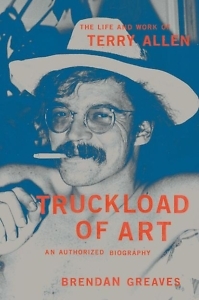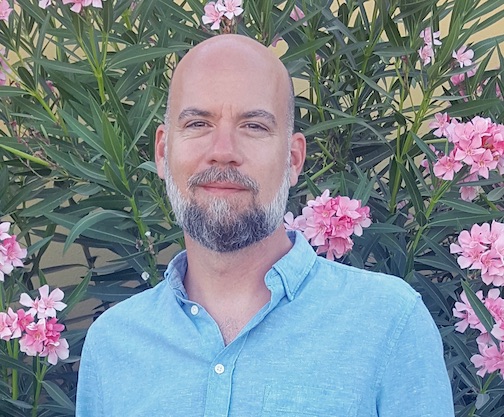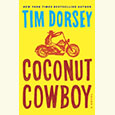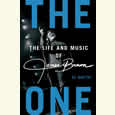It Ain’t Math
A new biography limns the life of musician and artist Terry Allen
In 2016, days after iconic songwriter Guy Clark died, a posse of his peers converged on Terry Allen’s house in Santa Fe. Their last names speak to the caliber of their own music: Crowell, Earle, Ely, Gill, Harris, Keen, Lovett.

After the makeshift memorial, when everyone went home, Allen was stuck with Guy’s longstanding directive: his cremains were to be cast into sculpture. “My thought,” Allen quipped, “was to make a goat and shove ‘em straight up its [ahem].”
Truckload of Art: the Life and Work of Terry Allen details his ongoing impact on music and conceptual art. The biography spends ample and appropriate time on its subject, since even a Google search won’t locate another esteemed country musician whose art has been exhibited at the Whitney Biennial, the MoMA, MOCA, LACMA, and via installations around the globe.
To quote Allen, writing about art is “like trying to French kiss over the telephone.” As such, biographer Brendan Greaves does a fine job braiding the “distant worlds of conceptual art and country music” via interviews, archival research, and Allen’s personal journals. Assisting this is Truckload’s chronological structure: “The Lubbock Section,” “The California Section, “and “The Santa Fe Section.”
“Lubbock” documents Allen’s adolescent, irreverent streak, his indelible family experience (including irreparable family trauma), and his nascent creativity. Allen’s musical education included concerts by Buddy Holly, Elvis, Hank Williams, and T-Bone Walker. One journal entry notes that a Bo Diddley show hit him with the “force of a prophecy.”
Texas also gave him a wild twang, a knack for small-town stories, and a penchant for darker cultural narratives: of dust, wind, and wheezing; Thalidomide-warped babies; and the tall tales of forebears who “coughed so hard their ribs popped out of their skin.”
 In Lubbock, he fell in love with his future wife, Jo Harvey, an artist in her own right and his collaborator for 50 years. But before their relationship had time to kick in, Terry bolted to Los Angeles, swearing he’d never look back. As an early journal entry noted “I want to be an artist. I want to be a writer. I want to be a musician.” In a later interview, he defined art as “getting out of town.”
In Lubbock, he fell in love with his future wife, Jo Harvey, an artist in her own right and his collaborator for 50 years. But before their relationship had time to kick in, Terry bolted to Los Angeles, swearing he’d never look back. As an early journal entry noted “I want to be an artist. I want to be a writer. I want to be a musician.” In a later interview, he defined art as “getting out of town.”
“The California Section” covers his artistic development at the Chouinard Art Institute, where he crossed paths with likes of Max Ernst, Leonora Carrington, and Marcel Duchamp. Driven to develop his own creative process, Allen took the advice of Man Ray, who insisted that when making art, “there are no rules, only responsibilities” to the work.
In time, Jo Harvey joined him. They hosted a radio show that featured interviews with Linda Ronstadt, Gram Parsons, Maybelle Carter, and many others. Yet Hollywood decadence was tough on the couple, even proving unsafe for their two young children. Greaves captures a stark moment in 1969, when the Allens came home to find a strange woman sitting on their floor, spinning records while “dead-eyed.” Turns out the intruder was a Manson family member. It was time to split southern California.
Truckload discusses Allen’s catalog of recordings but uses the albums Juarez and Lubbock (On Everything) as the lens through which we can consider them.
Regarded as a masterwork, 1975’s Juarez continues to drive Allen’s process. As Greaves explains, for “five and a half decades, [Juarez] has served as the elusive, enigmatic axis mundi of his art.” The songs of star-crossed lovers, U.S.-Mexico border-meets-conquistador-era narratives, violence, sexuality, and identity crises reflect Allen’s years of pre-planning and his ongoing drive to explain memory. Juarez reflects Allen’s idea that his artwork is often “the shortest distance between two questions marks”—even if the questions keep popping up.
Whereas Juarez remains a wellspring, 1979’s Lubbock (on Everything) is an identity, a return to the town left behind. The album captures the brighter side of Terry’s humor and satire and features his most covered songs: “New Delhi Freight Train” and “Amarillo Highway.” While Juarez is spare, Lubbock was recorded with a crack band. Still, Greaves reveals that this didn’t imply perfection. When producer/musician Lloyd Maines confronted Terry about his erratic timing, the response was “Relax, man — it’s music, it ain’t math.”
Several albums, exhibitions, and personal hurdles later, Santa Fe proved the ideal place to reset. As Truckload makes clear, after six decades Allen’s creative work is still robust. His new work still mines and reimagines the past, rendering culture, memory, and wit.
Such is the case with that Guy Clark directive. Instead of a goat, Terry sculpted two bronze crows, honoring Clark’s late-life obsession with two nests seen in Lubbock. Though the totem had changed, Allen’s process held firm. He worked through love, profound loss, and shared history, then offered up a wink and a grin. He claims that “my only regret” was not shoving some ashes inside the crows’ [ahem].

Odie Lindsey is the author of the story collection We Come to Our Senses and the novel Some Go Home, both from W.W. Norton. He is writer-in-residence at the Center for Medicine, Health, and Society at Vanderbilt University.


